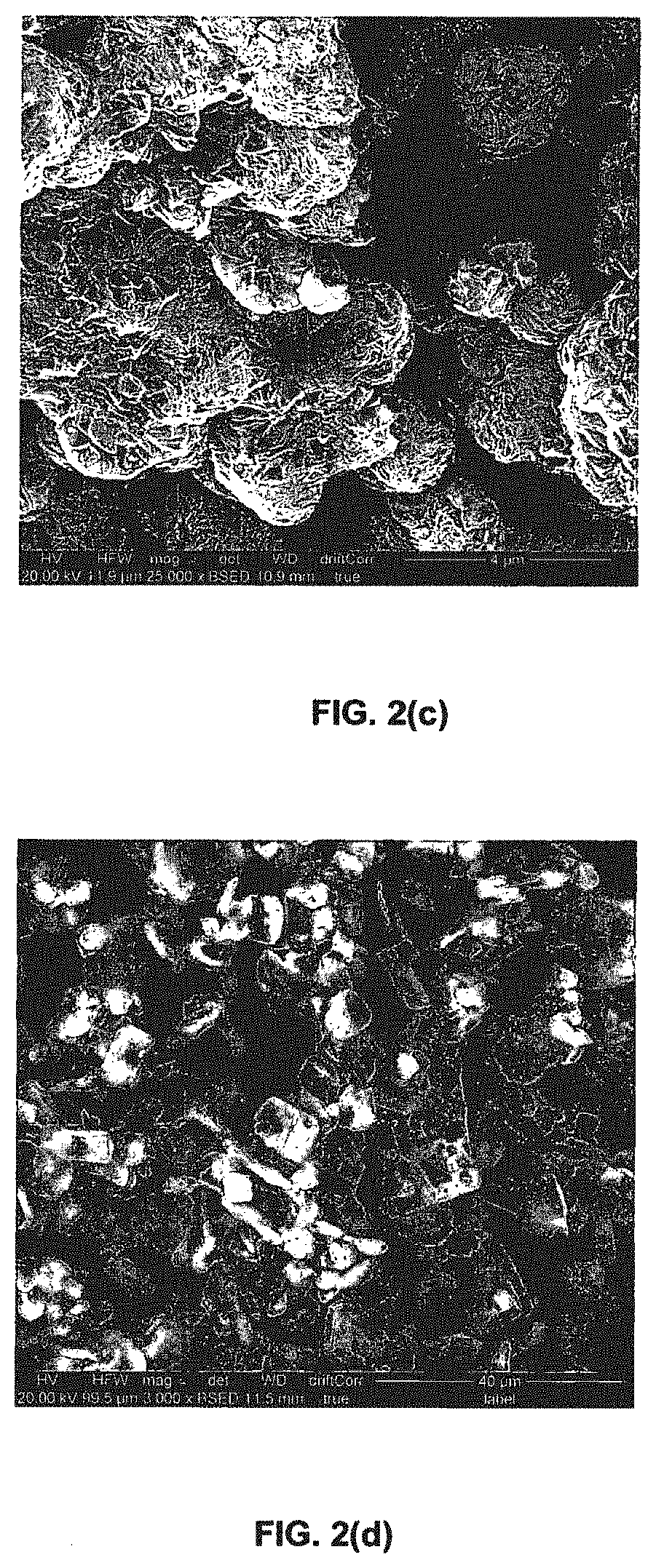Porous liquids
- Summary
- Abstract
- Description
- Claims
- Application Information
AI Technical Summary
Benefits of technology
Problems solved by technology
Method used
Image
Examples
example 1
of ZIF-8
[0069]Solution synthesis: Zn(NO3)2.6H2O (1.00 g, 3.36 mmol) was dissolved in 20 mL methanol (MeOH) in a conical flask. 2-methylimidazole (1.10 g, 13.44 mmol) was dissolved in a separated 20 mL methanol and mixed with former solution. The mixture is then stirring overnight at room temperature under air. The obtained solid was washed with 20 mL MeOH 3 times. Activation conditions: 200° C. for 3 hours in the oven. Ball mill synthesis: Zn5(CO3)2(OH)6 (0.175 g, 0.32 mmol) and 2-methylimidazole (0.393 g, 4.79 mmol) were added to a 25 mL ball mill jar with 13.6 ball bearing, followed by addition of 50 uL MeOH. The mixture was then milled for 30 min at 20 Hz. The obtained solid was washed with 10 mL EtOH 3 times. Activation conditions: 150° C. for 3 hours in the oven.
example 2
of HKUST-1
[0070]Solution synthesis: Cu(NOs)2.2.5H2O (0.5 g, 2.15 mmol) was dissolved in 10 mL methanol in a conical flask. Benzene-1,3,5-tricarboxylic acid (0.91 g, 4.30 mmol) was dissolved in a separated 10 mL methanol and mixed with former solution. The mixture was then stirring overnight at room temperature under air. The obtained solid was washed with 10 mL MeOH 3 times. Activation conditions: 200° C. for 5 hours in the oven. Ball mill synthesis: Cu(OH)2 (0.21 g, 2.15 mmol) and benzene-1,3,5-tricarboxylic acid (0.29 g, 1.37 mmol) were added to a 25 mL ball mill jar with 13.6 ball bearing, followed by addition of 0.5 mL MeOH. The mixture was then milled for 15 min at 25 Hz. The obtained solid was washed with 20 mL EtOH 3 times. Activation conditions: 200° C. for 3 hours in the oven.
example 3
of Al(fumarate)(OH)
[0071]A2(SO4)3.18H2O (1.225 g, 3.58 mmol) was dissolved in 15 mL deionised water in a conical flask. Fumaric acid (415 mg, 3.57 mmol) and NaOH (286.4 mg, 7.16 mmol) were dissolved in a separate 15 mL quantity of deionised water and mixed with the former solution. The mixture was then heated at 60° C. for 3 hours and cooled to room temperature. The off-white precipitate was collected by centrifugation and washed with 15 mL deionised water twice, followed by 15 mL MeOH twice, the obtained solid was dried under air. Activation conditions: 200° C. for 3 hours in the oven.
PUM
| Property | Measurement | Unit |
|---|---|---|
| Fraction | aaaaa | aaaaa |
| Fraction | aaaaa | aaaaa |
| Fraction | aaaaa | aaaaa |
Abstract
Description
Claims
Application Information
 Login to View More
Login to View More - R&D
- Intellectual Property
- Life Sciences
- Materials
- Tech Scout
- Unparalleled Data Quality
- Higher Quality Content
- 60% Fewer Hallucinations
Browse by: Latest US Patents, China's latest patents, Technical Efficacy Thesaurus, Application Domain, Technology Topic, Popular Technical Reports.
© 2025 PatSnap. All rights reserved.Legal|Privacy policy|Modern Slavery Act Transparency Statement|Sitemap|About US| Contact US: help@patsnap.com



